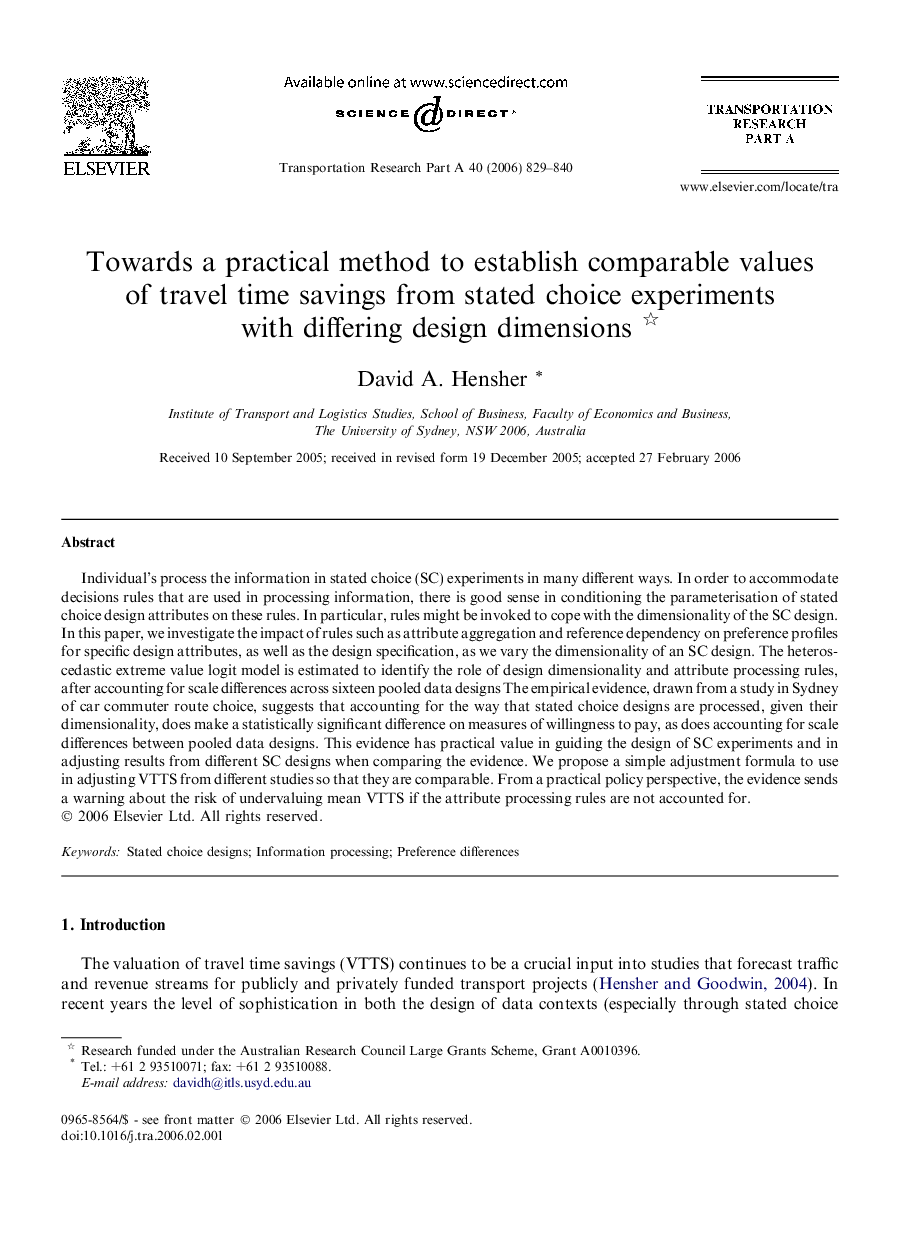| Article ID | Journal | Published Year | Pages | File Type |
|---|---|---|---|---|
| 311201 | Transportation Research Part A: Policy and Practice | 2006 | 12 Pages |
Individual’s process the information in stated choice (SC) experiments in many different ways. In order to accommodate decisions rules that are used in processing information, there is good sense in conditioning the parameterisation of stated choice design attributes on these rules. In particular, rules might be invoked to cope with the dimensionality of the SC design. In this paper, we investigate the impact of rules such as attribute aggregation and reference dependency on preference profiles for specific design attributes, as well as the design specification, as we vary the dimensionality of an SC design. The heteroscedastic extreme value logit model is estimated to identify the role of design dimensionality and attribute processing rules, after accounting for scale differences across sixteen pooled data designs The empirical evidence, drawn from a study in Sydney of car commuter route choice, suggests that accounting for the way that stated choice designs are processed, given their dimensionality, does make a statistically significant difference on measures of willingness to pay, as does accounting for scale differences between pooled data designs. This evidence has practical value in guiding the design of SC experiments and in adjusting results from different SC designs when comparing the evidence. We propose a simple adjustment formula to use in adjusting VTTS from different studies so that they are comparable. From a practical policy perspective, the evidence sends a warning about the risk of undervaluing mean VTTS if the attribute processing rules are not accounted for.
